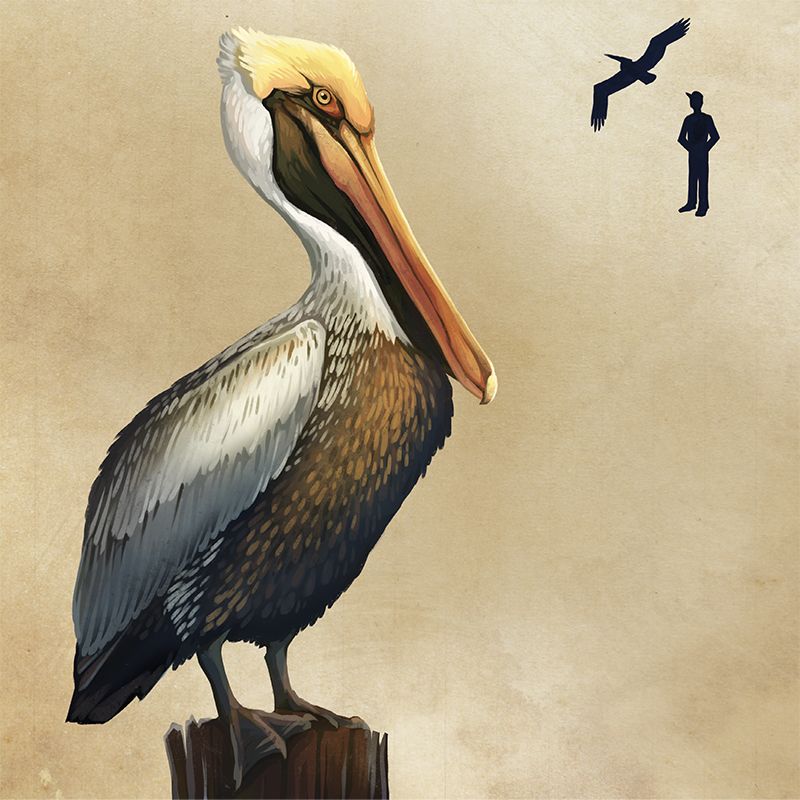Find yourself envisioning Jurassic Park’s flying dinosaurs when you see a brown pelican mid-air? You aren’t far off. This bird’s family lineage dates back 40 million years, giving it plenty of time to develop the aerobatic skills and unique anatomy that make it one of the most masterful flyers on the coast and incredibly adept at catching fish in saltwater. But if you believe they “hold food in their beak, enough for a week,” read on—the large gular throat pouch has an entirely different purpose

Quite a Spread The largest of all water birds, Pelicanus occidentalis can grow to more than four feet long, with its wingspan reaching six to eight feet across. These big guys eat up to four pounds of food—mostly fish, but also crustaceans and amphibians—each day.
Flocking Here Pelicans weren’t always a common sight in the Lowcountry: there were fewer than 2,000 nests in South Carolina in the early ’70s. By 1985, populations in the Southeastern United States had rebounded enough to warrant their removal from the Endangered Species List. Today, 38 percent of all the East Coast’s nesting brown pelicans summer in South Carolina, where they still face challenges including habitat loss.
A Salty Sailor The gular pouch under the beak isn’t for storing food but capturing it. After scooping up prey, the animal tilts back his head and contracts muscles in the pouch to squeeze out seawater before gulping the fish down. He consumes some salty liquid nonetheless; it’s absorbed into his bloodstream and carried to glands above the eyes, then excreted from the nostrils, running down grooves in the bill.
You can help! Crab Bank is one of five designated seabird sanctuaries managed and protected by the S.C. Department of Natural Resources. But last year, Hurricane Irma slammed into the already-eroded bank, washing away all nesting habitat. The South Carolina Coastal Bird Conservation Program is working to raise some $2 million by December to renourish the tiny island; learn more at sccoastalbirds.org.
High Diver This keen-eyed creature can spot a fish from 60 feet above the waves. She then goes into a plunge-dive, attaining speeds of up to 41 miles per hour and tucking her wings in just as she hits the water head-first. The shock of impact stuns the fish, but the bird’s body is engineered to absorb it: when the pelican stiffens her neck for a dive, a series of air sacs in it “inflate” like mini air bags.